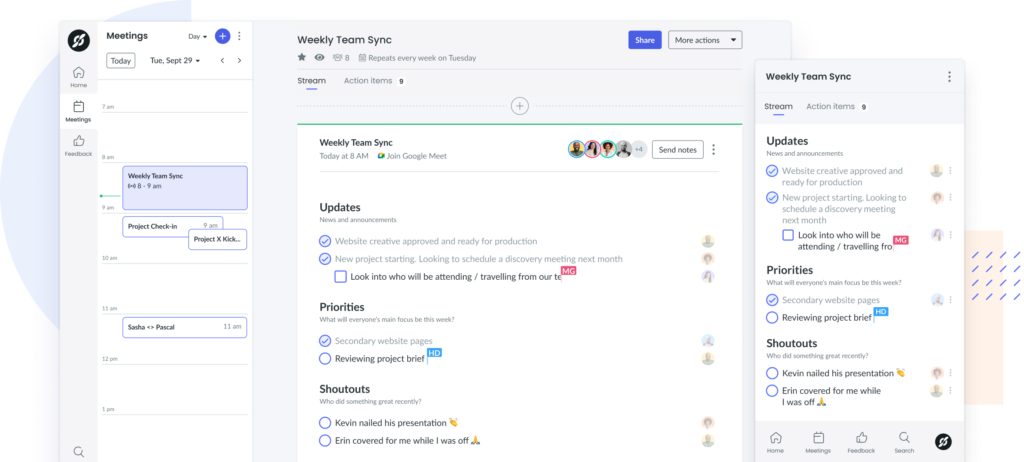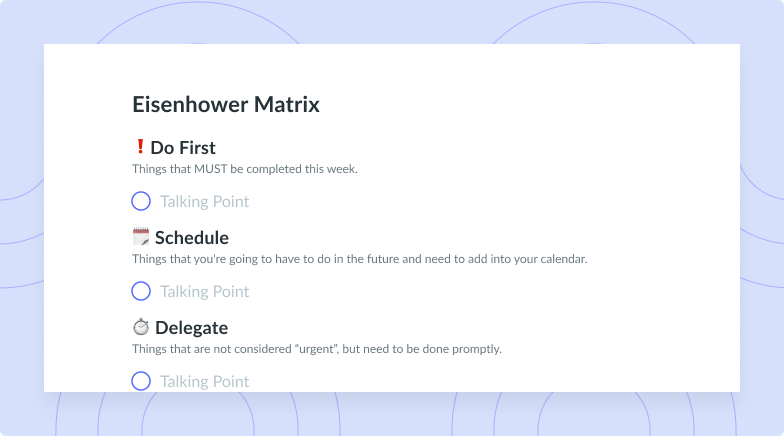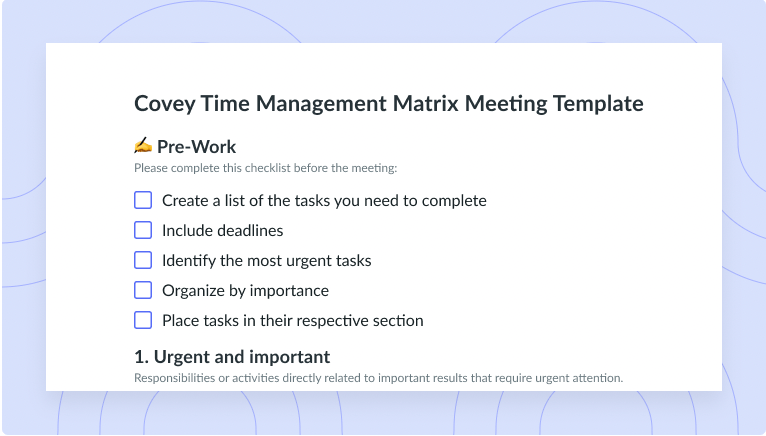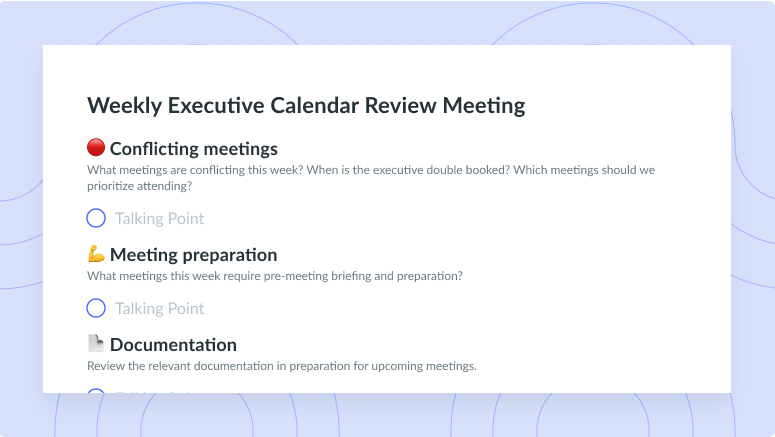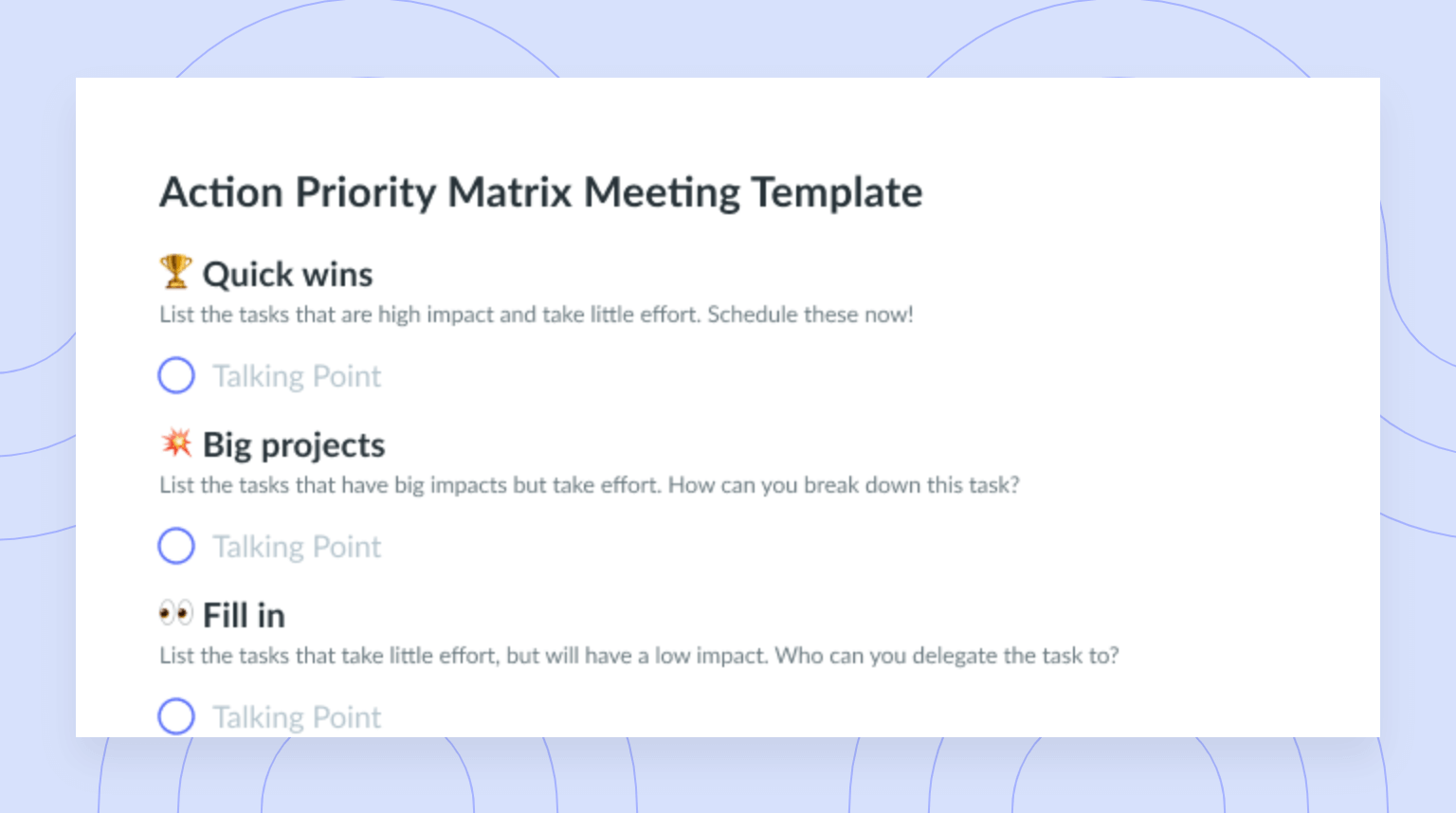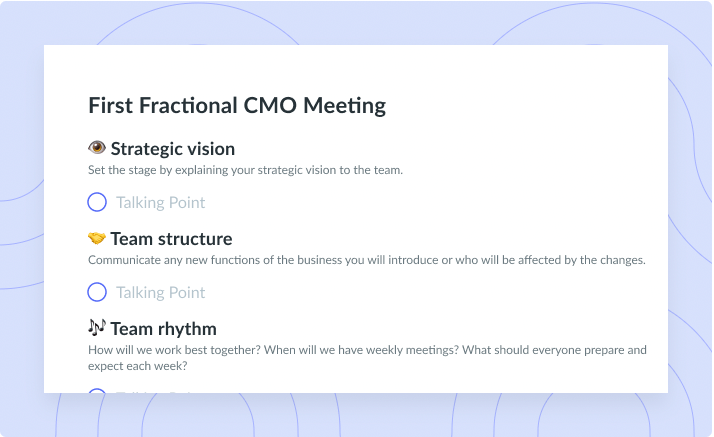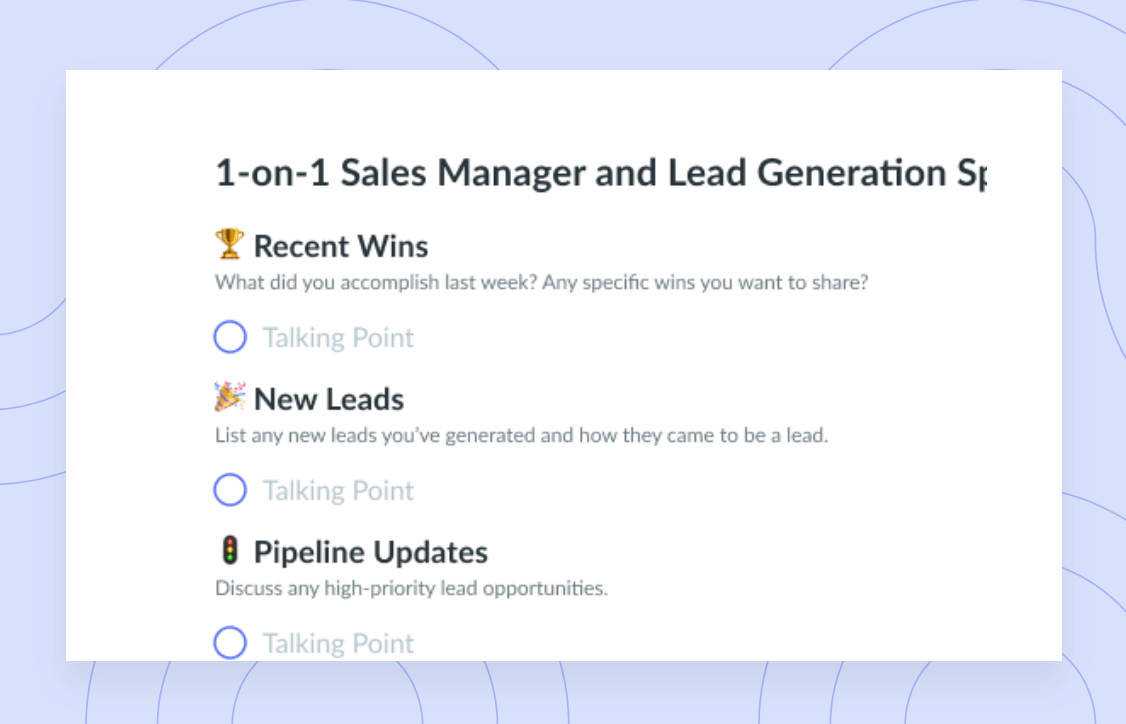8 Essential Priorities for COOs
Get results by identifying priorities and implementing a strategic plan that fosters communication and collaboration.
Chief operating officers (COOs) are constantly being bombarded with competing priorities. As the second in command in an organization, they are often bogged down with meetings and a never-ending list of responsibilities. As a result, they need to be scrupulous and learn how to prioritize only the most important tasks. In this article, we’ll teach you how to define your priorities in addition to covering 8 of the top priorities for successful COOs.
What is the role of a COO?
A COO (or chief operating officer) is one of the highest-ranking roles in an organization and acts as part of the C-suite. Typically the second highest-ranking executive in an organization behind the chief executive officer (CEO), COOs are often responsible for handling day-to-day operations as well as executing on long-term goals. On any given day, COOs are responsible for implementing policies to promote an organization’s culture and vision while simultaneously overseeing daily operations that help keep the business on track.
The roles and responsibilities of a successful COO will vary from organization to organization as there’s no one-size-fits-all job description or list of duties. Instead, each organization takes an individualized approach and defines the role based on its unique needs.

Level up your role as a COO
Collaborate on meeting notes, foster accountability with action items, and grow with meaningful feedback to level up your role as a COO. Try Fellow today!

How to define priorities as a COO
- Evaluate your current prioritization method
- Block time in your calendar for prioritization
- Try the Eisenhower Matrix
- Determine your tasks, delegate the rest
1Evaluate your current prioritization method
Nothing is quite as daunting as starting out the workweek with a lengthy list of to dos that seem completely unobtainable. Instead of overwhelming yourself with every task that’s on your mind, write down your top priorities and narrow down a starting point. When you take the time to define your top priorities, you’re giving yourself a clear starting point so you know exactly what you should be spending your time on.
While prioritization is key, it’s also important to evaluate your prioritization method. Evaluating your prioritization method will ensure you’re prioritizing what matters most so you can give urgent tasks your undivided attention and delegate the rest. Determining whether or not your current prioritization method is effective is crucial to future success.
2Block time in your calendar for prioritization
The greatest managers and leaders schedule time for planning and prioritization. Whether it be your new Sunday night ritual or an hour you block off on your Google calendar on Friday afternoons, setting aside time to prioritize your most important tasks will ensure you’re always one step ahead of the game.
Time blocking is an excellent time and energy saver that helps boost efficiency and eliminate stress. Instead of scattering your efforts among multiple competing tasks, you can focus solely on prioritization to organize all pressing tasks and list them in order of importance. Limiting the number of tasks you work on by setting aside time to focus strictly on prioritization will help limit distractions and boost attention to detail so you can make sure you’re prioritizing the tasks that matter most.
3Try the Eisenhower Matrix
If you struggle with prioritization, the Eisenhower Matrix is an excellent framework that will help you prioritize your tasks by categorizing them according to their urgency and importance. This productivity, prioritization, and time-management framework will help you identify which tasks are important and which ones aren’t so you can learn where to direct your energy and delegate whichever tasks aren’t important or urgent.
To leverage the Eisenhower Matrix correctly, you’ll need to categorize your tasks into four quadrants: important and urgent, not important and urgent, important and not urgent, and not important and not urgent. After you’ve taken the time to assign each item on your list to one of the four quadrants, you can effectively determine how to move forward.
4Determine your tasks, delegate the rest
Establishing priorities and delegating the rest are necessary to complete everything that needs to be done. While it might seem like an immediate time-management strategy, prioritization is key in achieving long-term goals. As a leader, delegating is important because you can’t—and shouldn’t—do everything on your own. Additionally, delegating empowers your team to step up during times of uncertainty, builds trust, and assists with professional development.
Before you can effectively delegate tasks to qualified team members, you need to clearly define your priorities. When you take the time to prioritize and break down your tasks in order of importance, you’ll be able to effectively choose which tasks you will be focusing on as well as which tasks must be delegated.
8 top priorities for COOs
- Have strong cybersecurity
- Use software to streamline productivity
- Oversee risk management
- Partner with departments to shape strategy
- Build and lead high-performing teams
- Prioritize meaningful work
- Be prepared
- Facilitate the ongoing enhancement of skills
1Have strong cybersecurity
While chief information officers (CIOs) are often responsible for technology, COOs also play a role. Cybersecurity is the art of protecting networks, devices, and data from theft, unauthorized access, or breaches, and this responsibility often falls on the COO’s shoulders. As a COO, having strong cybersecurity means safeguarding all types of data against theft and loss.
2Use software to streamline productivity
COOs need to constantly be striving for more. They must continuously iterate and make improvements to current processes that are outdated, are in need of improvement, or don’t streamline productivity. Tools like Fellow take productivity to new heights by enabling users to create collaborative meeting agendas, centralize important information, assign action items, and follow up.
3Oversee risk management
As a COO, you need to be excellent at identifying and assessing risks. Identifying risks means you have already explored potential roadblocks and tentative solutions. An example of a risk or threat would be a data breach. In this scenario, a responsible COO will have identified the risk before its arrival and worked towards implementing practices that help prevent future data leaks. While a COO may not be directly responsible for mitigating risks, they will be responsible for overseeing risk management.
4Partner with departments to shape strategy
COOs need to be exceptional communicators that are comfortable collaborating cross-functionally. Oftentimes important projects require cross-departmental collaboration and communication; COOs need to be able to include all necessary parties in an attempt to collaborate and gain insights that help shape future strategies.
5Build and lead high-performing teams
COOs are largely responsible for building and maintaining talented teams and processes. Your organization can only run smoothly if employees are happy, productive, and engaged, which is why it’s important to prioritize people management in addition to process management. Building and maintaining high-performing teams from a COO’s perspective may look like implementing a more robust onboarding process or creating a process that streamlines feedback and makes it possible for employees to engage with the organization.
6Prioritize meaningful work
Keeping your team busy is one thing; however, making sure your team members are doing meaningful work that moves the needle is another. As a COO, it’s your job to make sure the entire organization is working towards goals and objectives that benefit the organization. In tandem with the CEO, the COO needs to conceptualize long-term plans that are measured consistently, benchmark by benchmark.
7Be prepared
There’s no such thing as being over prepared as a COO. Having a game plan for every viable scenario is a must. As the second in command, it’s important that you be diligent in everything you do. Taking the time to be thorough and preparing with as much detail as possible will ensure you can support all the operational needs within your organization with confidence.
To quote this Forbes article directly:
“As a COO or director of operations, your time is limited. Preparation is invaluable. Have a clear plan of what you need to get out of each discussion before going in.”
Interested in optimizing every conversation? Consider leveraging a meeting agenda to make the most of every interaction.
8Facilitate the ongoing enhancement of skills
Today’s technical talent wants to work for organizations that are innovative, agile, and flexible, making hiring and retaining top technical talent difficult. If you can’t hire technical talent, the next best thing is developing it. Providing internal employees with professional development opportunities is an excellent way to create the talent you need. Not only that, but skills development is also an excellent way to boost morale and improve engagement within your organization.
Priorities for COOs
In conclusion, getting clear on your priorities is one of the best things you can do for your career as a COO. Not only will prioritizing benefit you in your role, but it will also create structure and clarity for those around you.
